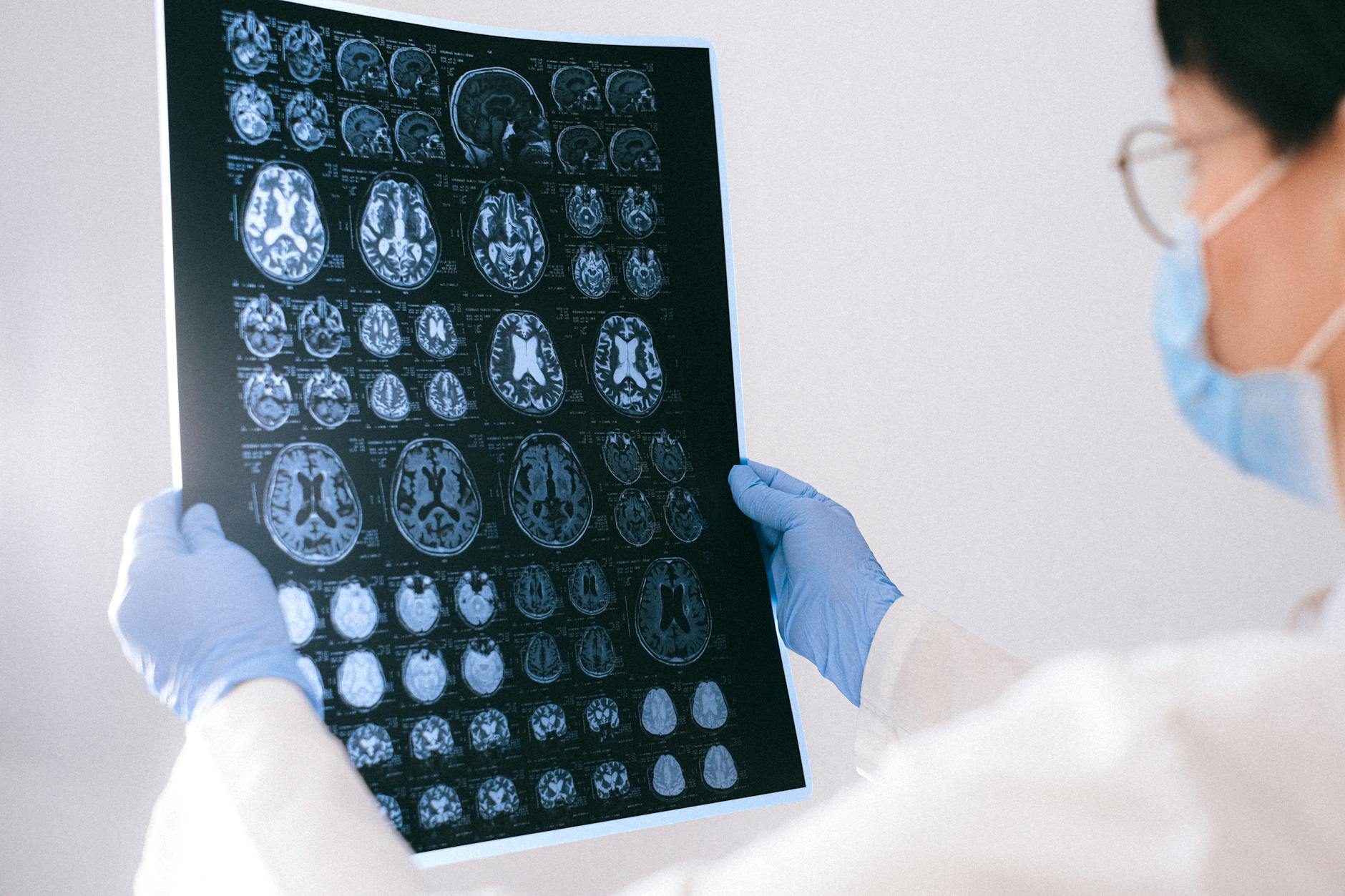Can Arthritis Be Prevented?
Discover how to prevent arthritis and take control of your health!

Understanding Arthritis
To gain insight into arthritis, it's important to understand the factors that contribute to its development. Arthritis can be influenced by both genetic factors and environmental influences.
Genetic Factors in Arthritis
Genetics and heredity play a role in certain types of arthritis, such as rheumatoid arthritis (RA). There are several genetic markers linked to RA, and the disease tends to cluster in families. Research has identified the HLA-DR4 gene, also known as Human Leukocyte Antigen, as one of the genetic markers most commonly associated with RA. Individuals who have this gene are more likely to develop RA compared to those who do not have it [1].

According to studies, the rate of rheumatoid arthritis is around 0.5% in the general population. However, for individuals with a family history of RA, the rate increases to 0.8%. Genetically European individuals with RA are at least twice as likely as unaffected individuals to carry the HLA-DR4 gene [1]. Understanding these genetic factors can lead to earlier diagnosis and more effective treatment options.
In the case of osteoarthritis, genetics also play a significant role. It is estimated that genetics contribute between 35% and 65% to the development of osteoarthritis. Epidemiological studies suggest that there is a 40% probability of inheritability in an osteoarthritic knee, and a 65% probability of inheritability in osteoarthritic hands and hips [2].
Environmental Influences on Arthritis
In addition to genetic factors, environmental influences also play a role in the risk of developing arthritis. The interplay between genetics and the environment is crucial in understanding the development of certain forms of arthritis, including rheumatoid arthritis [1].
While the specific environmental factors that contribute to arthritis are not yet fully understood, researchers believe that elements such as infections, smoking, and hormonal factors may play a role in triggering or exacerbating the condition. It is important to note that environmental factors can interact with genetic predispositions, increasing the risk of developing arthritis.
By understanding the genetic factors and environmental influences on arthritis, individuals and healthcare professionals can better comprehend the underlying causes of the disease. This knowledge can aid in early diagnosis, treatment, and the development of strategies to prevent or manage arthritis effectively.
Types of Arthritis
Arthritis is a broad term used to describe a group of conditions that cause inflammation and pain in the joints. There are several types of arthritis, each with its own unique characteristics. In this section, we will provide an overview of three common types: osteoarthritis, rheumatoid arthritis, and gout.
Osteoarthritis Overview
Osteoarthritis, also known as degenerative joint disease, is the most common form of arthritis. It typically occurs as a result of wear-and-tear damage to a joint's cartilage, leading to bone grinding directly on bone. This process can cause pain, stiffness, and restricted movement [3].
Osteoarthritis can develop gradually over many years, or it can be accelerated by factors such as joint injury or infection. It commonly affects weight-bearing joints such as the knees, hips, and spine. Treatment options for osteoarthritis include pain management, physical therapy, and lifestyle modifications. If you or your loved one is looking for arthritis knee support, there are various assistive devices available to provide stability and relieve discomfort.
Rheumatoid Arthritis Overview
Rheumatoid arthritis is an autoimmune disease in which the body's immune system mistakenly attacks the lining of the joint capsule, resulting in inflammation and swelling. Over time, this inflammatory process can lead to the destruction of cartilage and bone within the joint.
Unlike osteoarthritis, rheumatoid arthritis can affect multiple joints throughout the body. It often causes pain, stiffness, and swelling in a symmetrical pattern, meaning it affects the same joints on both sides of the body. Rheumatoid arthritis can also lead to systemic symptoms, such as fatigue, fever, and weight loss. Treatment for rheumatoid arthritis involves a combination of medication, physical therapy, and lifestyle changes.
Gout Overview
Gout is a unique form of arthritis that is characterized by the deposition of uric acid crystals in the joints. Excess uric acid in the blood can lead to the formation of these crystals, which can cause sudden and severe joint pain. The most commonly affected joint is the big toe, although gout can also affect other joints in the body [3].
Gout flares can be triggered by certain foods, alcohol, and medications. Managing gout involves a combination of lifestyle changes, including dietary modifications, medication to control uric acid levels, and pain management during flares. If you or your loved one is dealing with gout, it's important to work with a healthcare professional to develop a comprehensive management plan.
Understanding the different types of arthritis can help caregivers provide better support to their loved ones. If you suspect arthritis or notice any early symptoms, it's important to consult a healthcare professional for an accurate diagnosis and appropriate treatment. By understanding the specific type of arthritis and its unique challenges, caregivers can play a vital role in managing the condition and improving the quality of life for those affected.
Managing Arthritis Through Lifestyle
When it comes to managing arthritis, lifestyle plays a crucial role in alleviating symptoms and improving overall well-being. By adopting certain strategies and making positive changes, individuals can effectively manage their condition. In this section, we will explore the importance of early diagnosis, the benefits of exercise for arthritis, and the impact of diet on arthritis.
Importance of Early Diagnosis
Early diagnosis is vital in effectively managing arthritis. Identifying and diagnosing arthritis in its early stages allows for prompt intervention and treatment, which can help slow down the progression of the disease and minimize joint damage. Genetic factors, such as certain genetic markers, can contribute to the development of rheumatoid arthritis (RA), while environmental factors may also play a role [1]. Therefore, it's essential to seek medical attention if you experience persistent joint pain, stiffness, or swelling. Early diagnosis enables healthcare providers to create a personalized treatment plan tailored to your specific needs, helping you manage your arthritis more effectively.
Exercise for Arthritis
Regular exercise is highly beneficial for individuals with arthritis. Contrary to popular belief, exercise can reduce some of the symptoms of arthritis, improve joint mobility, and strengthen muscles around the joints [5]. Engaging in physical activity helps maintain joint flexibility, reduces pain, and enhances overall physical function. Here are a few exercises that can be particularly helpful for individuals with arthritis:
- Low-impact aerobic exercises: These exercises, such as walking, swimming, or cycling on exercise bikes for seniors, are gentle on the joints while providing cardiovascular benefits.
- Strength training: Strengthening exercises help improve muscle strength and joint stability. It's important to focus on exercises that target the muscles surrounding the affected joints.
- Range-of-motion exercises: These exercises help maintain and improve joint flexibility, reducing stiffness and increasing mobility. Examples include shoulder rolls, wrist circles, and ankle rotations.
- Hydrotherapy: Warm water exercises, also known as hydrotherapy, can be particularly beneficial for individuals with arthritis. The buoyancy and resistance provided by water help build muscle strength, improve joint mobility, and reduce pain.
It's important to consult with a healthcare professional or a physical therapist to determine the most suitable exercise regimen for your specific condition and individual needs. They can provide guidance on the appropriate exercises, intensity, and frequency, ensuring that you exercise safely and effectively.
Diet and Arthritis
While there is no specific diet that can cure arthritis, certain dietary choices can potentially help manage symptoms and support overall joint health. A well-balanced diet can contribute to maintaining a healthy weight, reducing inflammation, and providing essential nutrients for joint function. Here are some dietary considerations for individuals with arthritis:
- Omega-3 fatty acids: Foods rich in omega-3 fatty acids, such as fatty fish (salmon, mackerel, sardines), walnuts, and flaxseeds, may help reduce inflammation in the body. Omega-3 fatty acids have been shown to have anti-inflammatory properties, which can benefit individuals with arthritis.
- Antioxidant-rich foods: Antioxidants help reduce oxidative stress and inflammation in the body. Including foods like berries, leafy greens, colorful vegetables, and nuts in your diet can provide a variety of antioxidants.
- Maintaining a healthy weight: Excess weight puts added stress on the joints, exacerbating arthritis symptoms. By maintaining a healthy weight through a balanced diet and regular exercise, you can help alleviate joint pain and improve overall joint health.
It's important to note that dietary changes may vary depending on the type of arthritis and individual factors. Consulting with a registered dietitian or healthcare professional can provide personalized guidance and recommendations based on your specific needs and condition.
By embracing early diagnosis, incorporating regular exercise into your routine, and making mindful dietary choices, you can effectively manage arthritis and improve your quality of life. Remember to consult with healthcare professionals to ensure that your approach is tailored to your unique situation.
Treatment Options for Arthritis
When it comes to managing arthritis, there are various treatment options available to help alleviate symptoms and improve the quality of life for individuals with arthritis. These treatment options include medications, physical therapy, and surgical interventions.
Medications for Arthritis
Medications play a vital role in managing arthritis symptoms and reducing inflammation. The type of medication prescribed will depend on the specific type of arthritis and the severity of the symptoms. Common medications used to treat arthritis include:
It's important to consult with a healthcare professional to determine the most appropriate medication and dosage for your specific situation.
Physical Therapy for Arthritis
Physical therapy is an essential component of arthritis management. It involves exercises and techniques designed to improve joint mobility, strengthen muscles, and reduce pain. A physical therapist can create a personalized exercise program tailored to the individual's specific needs and abilities.
Physical therapy for arthritis often includes:
- Range-of-motion exercises: These exercises aim to reduce stiffness and increase the joint's ability to move through its full range of motion.
- Strengthening exercises: Strengthening the muscles around the affected joints can provide added support and stability, reducing pain and improving function.
- Aerobic exercises: Aerobic activities, such as walking, swimming, or cycling, can improve overall fitness, cardiovascular health, weight management, and energy levels.
Regular physical therapy sessions can help individuals with arthritis manage their symptoms, improve joint flexibility, and enhance overall physical function. It's important to consult with a physical therapist to develop an appropriate exercise plan.
Surgical Options for Arthritis
In severe cases of arthritis, when conservative treatments have not provided sufficient relief, surgical intervention may be considered. Surgical options for arthritis include:
- Joint replacement surgery: This involves replacing a damaged joint, such as the knee or hip, with an artificial joint made of metal and plastic. Joint replacement surgery can significantly improve mobility and reduce pain.
- Joint fusion surgery: In this procedure, the damaged joint surfaces are removed and the bones are fused together. Joint fusion surgery is typically performed in smaller joints, such as the wrist or ankle, to provide stability and reduce pain.
- Joint arthroscopy: Arthroscopy is a minimally invasive procedure that allows a surgeon to visualize and treat joint problems using small incisions and specialized instruments. It can be used for diagnostic purposes or to repair or remove damaged tissues within the joint.
Surgical options are typically considered when other treatment methods have been exhausted, and the individual's quality of life is significantly affected by arthritis symptoms. The decision to undergo surgery should be made in consultation with a healthcare professional.
By combining medication, physical therapy, and surgical interventions when necessary, individuals with arthritis can effectively manage their symptoms, reduce pain, and improve their overall quality of life. It's important to work closely with healthcare professionals to develop a comprehensive treatment plan tailored to individual needs and goals.
Lifestyle Changes for Arthritis
Living with arthritis often requires making certain lifestyle changes to manage symptoms and improve overall well-being. In this section, we will explore some important considerations for individuals with arthritis, including rest and recovery strategies, alcohol and smoking considerations, and support programs for lifestyle changes.
Rest and Recovery Strategies
Rest is crucial during flare-ups of rheumatoid arthritis symptoms to allow the joints to recover. During these periods, it's important to listen to your body and give it the rest it needs. This may involve reducing activities that put stress on the affected joints and opting for gentle movements and stretching exercises.
Once symptoms subside, it is generally recommended to gradually resume exercise with guidance from a healthcare professional. Exercise plays a vital role in maintaining joint flexibility, reducing pain, and improving overall strength. Low-impact activities like swimming, walking, and exercise bikes can be beneficial for individuals with arthritis.
Alcohol and Smoking Considerations
For individuals with rheumatoid arthritis, it is advised to limit alcohol intake, especially when taking medications that may increase the risk of liver damage. It is best to consult with a healthcare professional about the amount and frequency of alcohol consumption while on medication. Reducing or eliminating alcohol consumption may help manage symptoms more effectively and promote overall health [6].
Smoking is a known risk factor for the development and progression of rheumatoid arthritis. Quitting smoking may lead to an improvement in symptoms. If you are a smoker and have arthritis, consider reaching out to healthcare professionals or organizations that offer Tobacco Cessation Programs to receive the support and tools you need to quit smoking.
Support Programs for Lifestyle Changes
Making lifestyle changes can be challenging, especially when managing a chronic condition like arthritis. Fortunately, there are various support programs available to help individuals navigate these changes. These programs often provide educational resources, guidance, and a supportive community that can make the journey easier.
Consider exploring local support groups or online communities where you can connect with others who have similar experiences. Additionally, healthcare institutions and organizations often offer resources such as workshops, webinars, and educational materials to help individuals with arthritis make necessary lifestyle changes. Taking advantage of these resources can provide valuable information and support throughout your journey.
By implementing rest and recovery strategies, being mindful of alcohol and smoking, and seeking support through relevant programs, individuals with arthritis can better manage their symptoms and improve their overall quality of life. Remember to consult with healthcare professionals for personalized advice and guidance on the most suitable lifestyle changes for your specific condition.
References
[2]: https://www.ncbi.nlm.nih.gov/pmc/articles/PMC2694558/
[3]: https://www.mayoclinic.org/diseases-conditions/arthritis/symptoms-causes/syc-20350772
[4]: https://www.healthline.com/health/early-symptoms-arthritis
[5]: https://www.betterhealth.vic.gov.au/health/conditionsandtreatments/arthritis-and-exercise
[6]: https://nyulangone.org/conditions/rheumatoid-arthritis/treatments/lifestyle-changes-for-rheumatoid-arthritis

































































































